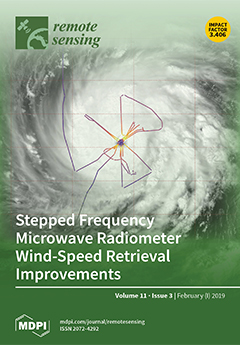The timing regimes of precipitation can exert profound impacts on grassland ecosystems. However, it is still unclear how the peak aboveground biomass (AGB
peak) of alpine grasslands responds to the temporal variability of growing season precipitation (GSP) on the northern Tibetan Plateau. Here, the temporal variability of precipitation was defined as the number and intensity of precipitation events as well as the time interval between consecutive precipitation events. We conducted annual field measurements of AGB
peak between 2009 and 2016 at four sites that were representative of alpine meadow, meadow-steppe, alpine steppe, and desert-steppe. Thus, an empirical model was established with the time series of the field-measured AGB
peak and the corresponding enhanced vegetation index (EVI) (R
2 = 0.78), which was used to estimate grassland AGB
peak at the regional scale. The relative importance of the three indices of the temporal variability of precipitation, events, intensity, and time interval on grassland AGB
peak was quantified by principal component regression and shown in a red–green–blue (RGB) composition map. The standardized importance values were used to calculate the vegetation sensitivity index to the temporal variability of precipitation (VSIP). Our results showed that the standardized VSIP was larger than 60 for only 15% of alpine grassland pixels and that AGB
peak did not change significantly for more than 60% of alpine grassland pixels over the past decades, which was likely due to the nonsignificant changes in the temporal variability of precipitation in most pixels. However, a U-shaped relationship was found between VSIP and GSP across the four representative grassland types, indicating that the sensitivity of grassland AGB
peak to precipitation was dependent on the types of grassland communities. Moreover, we found that the temporal variability of precipitation explained more of the field-measured AGB
peak variance than did the total amount of precipitation alone at the site scale, which implies that the mechanisms underlying how the temporal variability of precipitation controls the AGB
peak of alpine grasslands should be better understood at the local scale. We hypothesize that alpine grassland plants promptly respond to the temporal variability of precipitation to keep community biomass production more stable over time, but this conclusion should be further tested. Finally, we call for a long-term experimental study that includes multiple natural and anthropogenic factors together, such as warming, nitrogen deposition, and grazing and fencing, to better understand the mechanisms of alpine grassland stability on the Tibetan Plateau.
Full article





